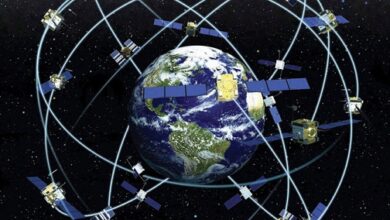What is Geodesy branches types Geodesics and Geodesy
Geodesy
Geodesy is the science that analyzes the determination of the Earth’s shape, dimensions and gravity field. Geodetic activities provided a revolution in cartography with the implementation of the Global Positioning System (GPS).
Through the use of this system it is possible to obtain more precise information for the determination of positions, static or kinematic, combining speed and precision much superior to the classic methods.
In Brazil, the body responsible for activities related to geodesy is the Brazilian Institute of Geography and Statistics (IBGE), which developed the Brazilian Geodetic System (SGB), formed by the set of stations, materialized on the ground, whose position serves as a precise reference to several engineering projects (construction of roads, bridges, dams, etc.), in addition to mapping, geophysics and scientific research.
It is considered at the same time a branch of Engineering and Geosciences, which deals with the survey and representation of the shape and surface of the Earth. Mathematics and physics also study geodesy, as a way to determine the measurement of curved surfaces, using methods similar to those used on the curved surface of the Earth.
In recent years there has been the development of a set of disciplines called geodetic sciences, which allow measuring, representing and analyzing geographic space with high precision. These sciences are Cartography (the oldest), Topography, Position Astronomy, Photogrammetry, Remote Sensing and Geodesy.
The term geodesy was first used in Ancient Greece, by Aristotle, and means geographical divisions of the earth, or the act of dividing the earth.
It is considered at the same time a branch of Engineering and Geosciences, which deals with the survey and representation of the shape and surface of the Earth. Mathematics and physics also study geodesy, as a way to determine the measurement of curved surfaces, using methods similar to those used on the curved surface of the Earth.
Major branches of Geodesy
We can divide it into two major branches:
- Superior Geodesy or Theoretical Geodesy, divided between physical and mathematical geodesy, tries to determine and represent the figure of the Earth in global terms.
- Lower Geodesy, Practice or Topography: is the part that studies and represents smaller portions of the Earth where the surface can be considered “flat”.
If we are based on the study of the earth, according to a mathematical concept, geodesy studies both the shape and the dimensions of the earth, however, according to the definition of the concept of geodesy, the field of gravity and its temporal variations are also studied. These last two concepts are within the field of physics.
Types of Geodesy
we can divide it into two types:
- Physical Geodesy (gravity field): where the Earth’s gravity field is studied by hypothesizing mass distribution models inside the Earth and measuring gravity on the surface.
- Mathematical Geodesy: studies the figure of the Earth by determining the coordinates of points located on the Earth’s surface based on a fixed reference system valid for the entire Earth.
Geodesic dome
Also known as a geodesic dome, this architectural work was initially conceived by Richard Buckminster Fuller , an American designer and architect.
The basis for building a geodesic dome is the face of an icosahedron subdivided into several parts. The greater the number of pieces fragmented into symmetrical triangles, the more round and compact the dome will be.
Geodesic domes are known for being highly resistant and lightweight structures , ensuring easy transport.
Geodesics and Geodesy
As seen, the geodesic consists of the distance or path formed between two points in a three-dimensional space, or according to the precepts of the General Theory of Relativity, in four-dimensional planes.
On the other hand, it is a science that studies the dimensions, shape and gravitational field of planet Earth.
It forms a set of fields of study (Geodetic Sciences) that encompass disciplines such as: cartography, topography, photogrammetry, remote sensing, among others.


